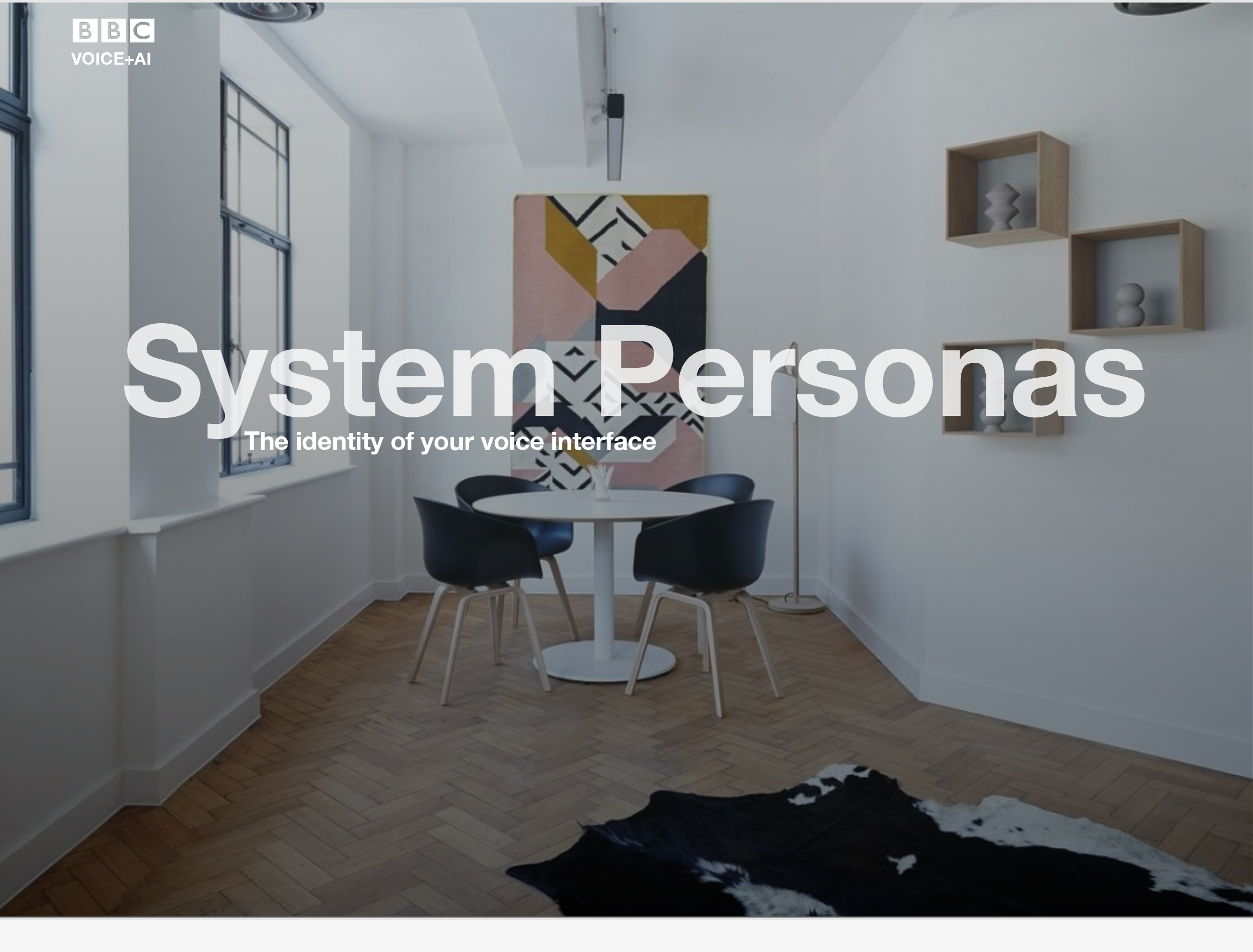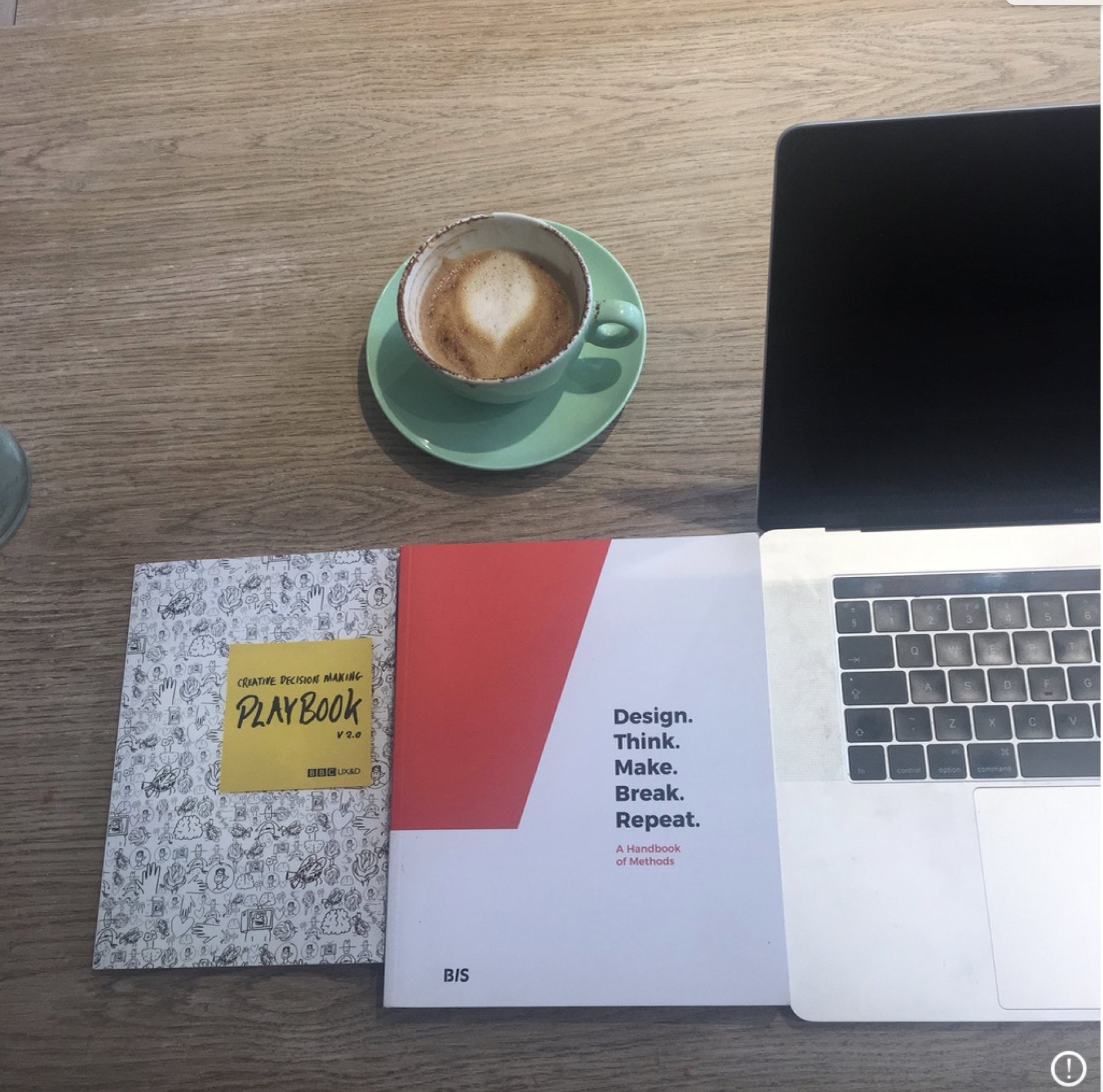Helping multidisciplinary teams working on Voice Interfaces to define a working process and cultivate a common language.
Role: UX lead | Research | Visual language | Workshop facilitator
THE CHALLENGE:
To build a framework for developing Voice System Personas for a portfolio of Digital Products. The blurred boundaries between disciplines in Voice UI, necessitates this being a highly collaborative exercise that includes input from Content Producers, Developers as well as UX Researchers, UX Designers and UX Writers.
THE OUTCOME:
A modular System Persona toolkit for a Voice Product including Workshop Collaboration Cards. This modular approach makes it easily adaptable for many different products and the workshop style of participation help teams engage in deeper thinking about the core attributes of brand tone, language and personality of their Voice product.
01_
Investigating
What + Why + Where to begin
A System Persona in the context of a Voice Interface is simply the identity, behaviour and personality of the product itself. So while we are building User Personas, we should also build a Persona of the System that they will interact with. One that will match their needs, behaviours and expectations. It also felt like a good way of linking our user research findings with product decisions (Tone of Voice, Content Delivery, Features, Multimodal capabilities etc).
Our work started with a number of market and research reports that were available to us on the target audience. This included a Youth Audience and also a Voice Behavioural Modes Report. However, we were primarily influenced by learnings from Lab testing carried out on early Voice Skill products developed within the BBC.
02_
Implementing
I created a template for a System Persona that consists of six core modules. For each module, I created an accompanying Persona Workshop Card. These Templates and Cards can be used to collaborate with different teams to help capture information, observations and ultimately encourage them to think about their Voice product in new ways. They are asked to think about Tone of voice, voice traits, core abilities, voice style and register.
01_Personality map: Aarron Walter uses this tool in the book ‘Designing for Emotion’. The Voice products personality is mapped on an X & Y axis. The X axis indicates where the personality falls between being friendly or unfriendly. The Y axis shows where it falls between dominant and submissive. Locations on the personality map will vary depending on what the user is doing at any given time. In certain scenarios, a friendly and submissive personality may be appropriate, whereas in others, a more assertive less friendly personality is more suited.
02_Voice traits / This…but not that exercise: The is a list of traits that best describe the Voice Product along with other traits that need to be explicitly avoided. This will help those designing and writing for Voice UI’s to create a consistent personality aligned to the brand while avoiding the traits that might take the brand in the wrong direction.
03_User needs & sub-needs: An M&A Report Identifies 4 deep psychological needs that all audiences use media & technology to satisfy. These can then be sub-divided further into sub-needs (for example, a young audience might have Social Connection Needs, such as bonding and social acceptance) This components of the System Persona maps out which core user needs its product can satisfy.
04_Portrait / abilities: This component provides an overview of the personality of a VUI. It helps to define for example what makes your product different from your competitors. What are it’s core talents/abilities, attitudes etc. An image of a person that embodies the traits you wish to include in your Voice Product can help make the personality less abstract.
05_Vocal Attributes / Style / Register: This component enables the team to define more explicitly how the VUI will actually speak. What sorts of things might she/he say? The vernacular, register of the voice? What contractions they use? How might it change in various communication situations? People change their language and tone to fit the situation, and so should the Voice Product. Indicative examples of the type of language and words that can be used in different situations help the team to quickly get a sense for how the VUII communicates.
06_Timeline: Built on insights gained from user testing, the last component is used to map out how and when people are interacting with the Voice devices. We can plot and show the different needs and behaviours of the user throughout a typical day.
07_Visual Lexicon: Allowing people use visual references can also help: what colour do they hear?, what do they see when they think of VUI? These becomes even more important as we move towards multimodal voice experiences.
03_
Collaborating
Using the Persona template and Module Cards, a series of workshops can be run with multidisciplinary teams. The core aims are to start the dialogue, capture observations and help make product decisions. The Workshops also includes a number warm up exercises like User Experience Mapping sessions, Hope, Fear & Expectations. Workshop participants include: UX Designers, Researchers, Copywriters, Architects as well as Developers and Content Producers. These workshop have begun already but we hope to include this initiative into the on-boarding process for other departments looking to include a VUI into their products.
Referenced :
Creating a Persona: What does your product sound like? (Google I/O ’18) Walter Brill https://www.youtube.com/watch?v=tUbB_FbIqPw&t=1554s
Crafting a Design Persona https://alistapart.com/article/crafting-a-design-persona
Designing for emotions by Aarron Walter https://abookapart.com/products/designing-for-emotion












